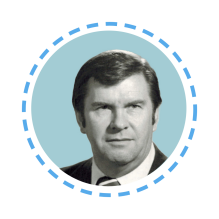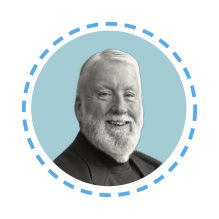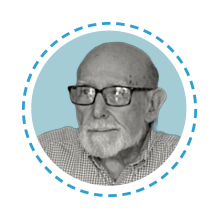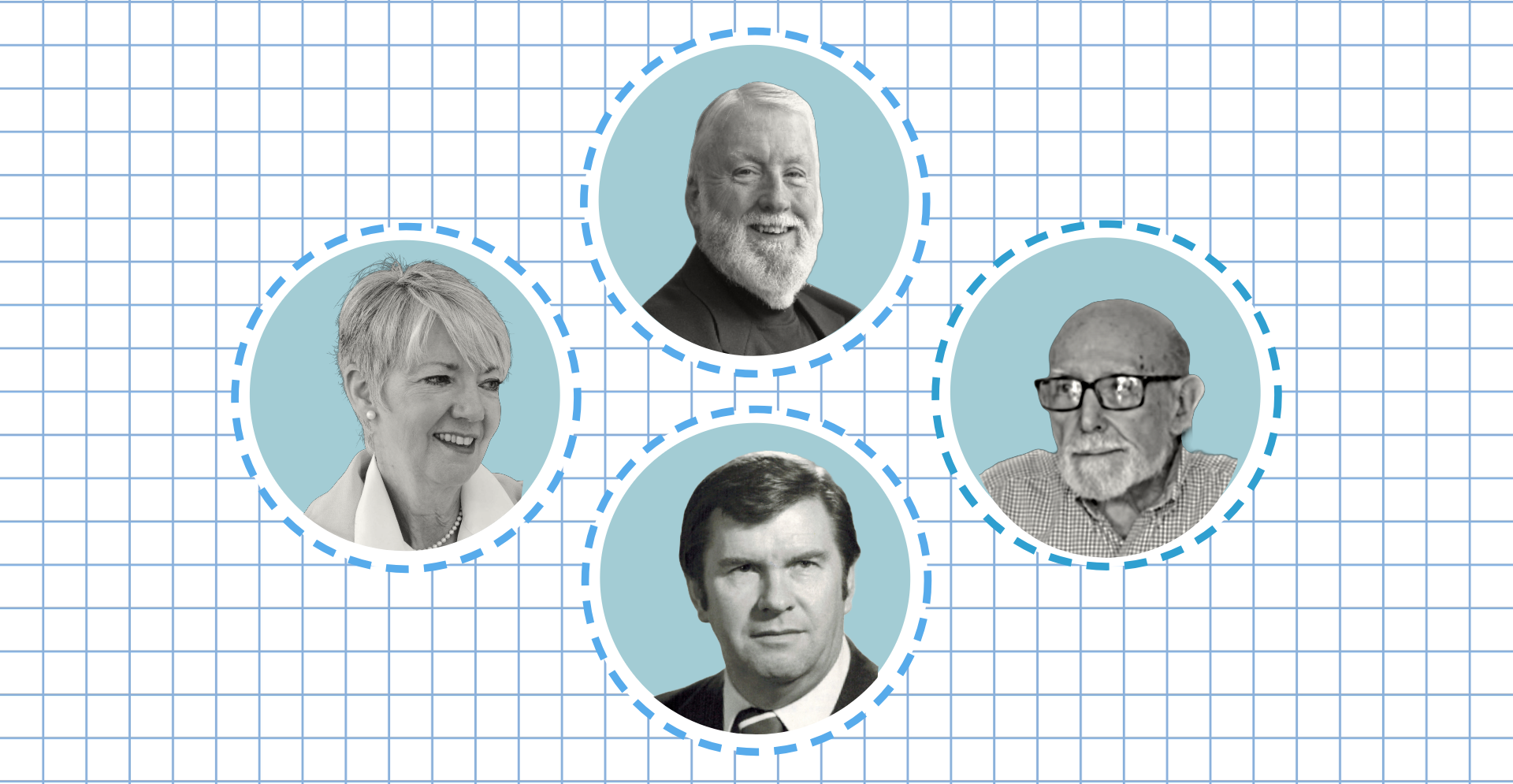CLaRI: A 60-year legacy
BY ANN WHITCHER-GENTZKE

When the late William Eller left the University of Iowa and its reading laboratory in the early 1960s to join the UB faculty as professor of education, he was determined to better understand why some students could learn to read easily, while others struggled throughout the process.
The Wisconsin native devoted his life to this goal, becoming one of the nation’s most accomplished researchers in the field of reading instruction. In 1963, he founded CLaRI, then known as The Reading Center, and headed it until 1971, when he was succeeded by Michael Kibby. While at UB, Eller developed numerous instructional tools for teachers and published widely on reading education. In 1986, he was elected to the Reading Hall of Fame by the International Reading Association. Following Eller’s death in 1993, his wife Betty Eller and sister Kathryn S. Rieder established the William Eller Scholarship Fund in recognition of his many contributions to reading research and education.

Michael Kibby*, retired professor and former chair of the Department of Learning and Instruction, is revered for both developing reading diagnostic tools and his literacy education research. Kibby, who earned his PhD from the University of Chicago and served as director of CLaRI (over the years, variously called The Reading Center or The Reading Clinic) from 1971 until 2007, has had a lasting impact on the literacy field. In 1995, he presented his reading diagnosis and remediation processes in the influential book “Practical Steps to Informing Literacy Instruction: A Diagnostic Decision-Making Model.” Many of his former students became reading specialists, enthusiastically incorporating his methods into their own work as literacy educators.
In a tribute written in 2008 to honor Kibby on his retirement, Christina Bogan and Debra Dechert, then assistant to the chair in the Department of Learning and instruction and CLaRI associate director, respectively, wrote of Kibby’s work and its importance. “Children who fail to learn to read fail a life goal—and they know and feel it. So when traditional programs have not succeeded and a reading teacher is sought, that reading teacher must create success. [Kibby] believes every reading teacher he teaches must and will be the catalyst in changing a child who failed in reading into a child who succeeds in reading; the responsibility is significant for the reading teacher.”
Today, Kibby looks back “with pride on all the graduate students who’ve come through” CLaRI. “The center provided instruction to graduate students. Graduate students, in turn, provided excellent instruction, in most cases, to the kids.” He explained that it could be difficult for graduate students working as reading tutors. Having already obtained a teaching certificate, tutors sometimes initially felt uncomfortable receiving constructive criticism and instruction on how to work with children struggling to read. But there was a lesson they couldn’t miss, he said. “This is a deeper method of knowing what it means to teach a child to read. You have to take in more parameters than a classroom teacher can easily do.”
* During this interview, Dr. Michael Kibby graciously shared his insights and memories with us. With a heavy heart, we must inform our readers that Dr. Kibby has since passed away, around the time of this publication. His contributions to our field and the wisdom he imparted during this interview will be greatly missed. We extend our deepest condolences to his family, friends, and colleagues during this difficult time.

Sam Weintraub, a GSE professor who contributed enormously to the school’s literacy education programs, came to UB in the fall of 1974 as a full professor, having taught previously at Indiana University and the University of Chicago. In 1987, he was inducted into The Reading Hall of Fame. That same year, he received the William S. Gray Citation of Merit Award “for continuous leadership in dissemination of reading research through a lifetime of seminars, writings, editorships, and over 30 years of authoring and editing the Annual Summary of Investigations Related to Reading.” Weintraub earned his EdD from the University of Illinois and taught second-through-sixth grades in Michigan before embarking on his academic career. Today, at age 96, Weintraub communicates by phone and email. Although his eyesight is affected by macular degeneration and he says his hearing “isn’t great,” Weintraub still keeps up with literacy education trends like the science of reading through newspaper accounts and stays in touch with former colleagues in GSE. He is proud of the doctoral students he helped train “who subsequently became known” for their research and for his literacy expertise.
Among Weintraub’s former graduate students, Jill Fitzgerald stands out. She also studied with Kibby, while earning her PhD from GSE in 1979, and went on to a distinguished research and scholarly career at the University of North Carolina at Chapel Hill, where she also served as interim dean. Today, she continues at UNC as research professor and professor emerita. “Mike and Sam were both ‘advisors,’ but I would say they were true mentors,” she said. At the time, Fitzgerald was a supervisor in what was then called The Reading Clinic under Kibby’s direction. “I valued the exposure to grow my thinking about reading diagnosis and instruction,” Fitzgerald said of this period. “I was immersed in the practice of figuring out children’s reading strengths and weaknesses.”
Those experiences helped shape her own scholarly perspective. “I began to see that reading researchers were siloed in ways that may have limited their vision of how reading happens and how we can help teachers and students. When we ‘grow up’ in one silo (e.g., linguistics, psychology, English education, neurology or reading education), we tend to inherit certain ways of understanding the world, of ‘seeing’ what it means to read. … I’ll always hang on to the ways in which diverse perspectives on reading (and writing) research make me think about cultural impact, and the universe of ways of seeing and thinking about reading processes and instruction.”

Like Weintraub, Fitzgerald is a member of the Reading Hall of Fame; she was inducted into the prestigious body in 2011, and she cites Weintraub’s lasting influence. “He was imbued with a gentle, quietude that was sprinkled with dry humor. Through the last, well, now five, decades, I’ve said many times, ‘If you need help thinking through something, if you’re open to change and critique, Sam is the person you want in the room.’”
And, too, Fitzgerald credits Kibby for everything she learned about reading diagnosis. “By this I mean how to figure out a student’s strongest reading processes along with the weaker ones, and then how to link instruction to strengths and weaknesses. … Mike’s reading diagnosis model is still my go-to way of thinking about the processes a child is using during reading.”
To express her gratitude and admiration for both Kibby and Weintraub, in 2018, Fitzgerald established a fund honoring her mentors. The Drs. Sam Weintraub and Michael Kibby Fellowship Endowment Fund provides support for a PhD student (or students) in GSE whose doctoral work is focused on literacy research, and who plans a career in the field.
Cover Story
UB’s comprehensive approaches are reshaping literacy education, fostering community partnerships, and preparing future literacy professionals to tackle educational challenges.
